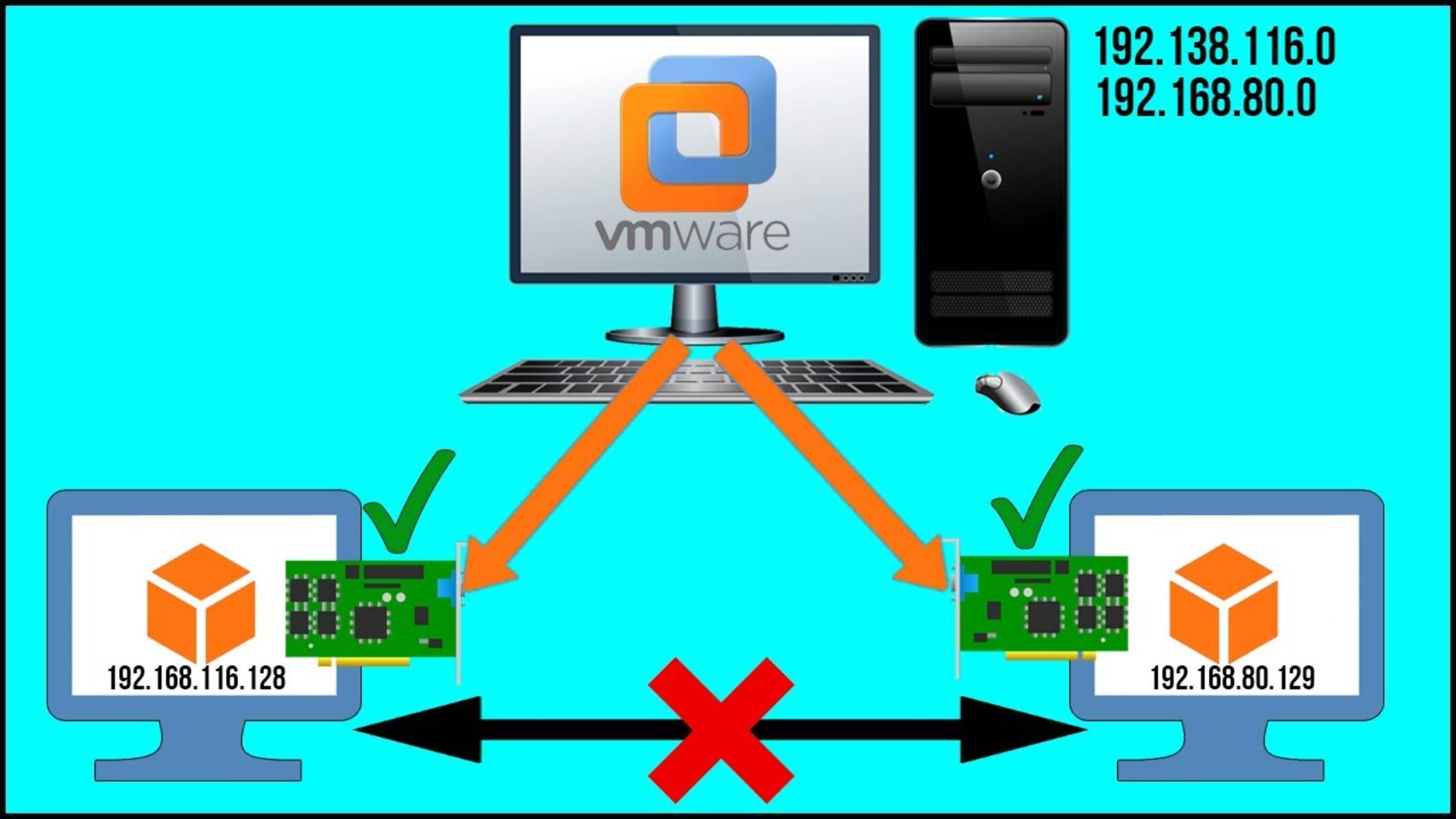Introduction
Welcome to our guide on how to assign an IP address in VMware Workstation. As a powerful virtualization software, VMware Workstation allows users to create virtual machines and run different operating systems on a single machine. Whether you’re setting up a test environment or developing software, being able to assign IP addresses to your virtual machines is crucial for network connectivity and communication.
Understanding how IP addresses work and knowing how to assign them effectively is essential for anyone working with virtual machines. In this guide, we will provide you with a step-by-step process to assign an IP address in VMware Workstation. We will also discuss the different types of IP addresses and common issues that may arise during the assignment process.
Before we dive into the details, let’s briefly explain what an IP address is. An IP address (Internet Protocol address) is a unique numerical identifier assigned to each device connected to a network. It serves as a way to identify and locate devices within a network and enables communication between them. IP addresses consist of four sets of numbers separated by periods, such as 192.168.0.1.
Now that we have a basic understanding of IP addresses, let’s explore the different types you may encounter when working with VMware Workstation.
Understanding IP Addresses
Before we delve into the process of assigning an IP address in VMware Workstation, it’s important to have a solid understanding of what IP addresses are and how they function in a network environment.
IP addresses are numerical identifiers that uniquely identify devices on a network. They allow devices to communicate with each other using the Internet Protocol (IP). Each IP address consists of four sets of numbers, ranging from 0 to 255, separated by periods. For example, 192.168.0.1 is a common IP address format.
There are two main types of IP addresses: IPv4 and IPv6. IPv4 addresses are the most widely used and consist of 32 bits, resulting in approximately 4.3 billion unique addresses. With the rapid growth of internet-connected devices, IPv4 addresses are becoming scarce. To address this, IPv6 was introduced, which uses a 128-bit address structure and provides a staggering number of unique addresses.
IP addresses are typically divided into two parts: the network part and the host part. The network part identifies the network to which the device belongs, while the host part identifies the specific device on that network.
IP addresses can be assigned in a couple of ways. Static IP addresses remain fixed and do not change unless manually modified. They are commonly used for devices that require a permanent address, such as servers. Dynamic IP addresses, on the other hand, are assigned by a Dynamic Host Configuration Protocol (DHCP) server. These addresses are temporary and can change each time a device connects to the network.
Understanding IP addresses is crucial for efficiently managing network resources and ensuring proper communication between devices. Now that we have a clear understanding of IP addresses, let’s move on to the process of assigning an IP address in VMware Workstation.
Types of IP Addresses
When working with IP addresses in VMware Workstation, it’s important to be familiar with the different types you may encounter. Let’s explore the main types of IP addresses:
1. Public IP Addresses: Public IP addresses are globally unique addresses that are assigned to devices connected directly to the internet. These addresses allow devices to communicate with other devices on the internet. Public IP addresses are obtained from Internet Service Providers (ISPs) and are required for devices like web servers or email servers that need to be accessible from anywhere on the internet.
2. Private IP Addresses: Private IP addresses are used within private networks, such as a home or office network, to allow devices to communicate with each other. These addresses are not globally unique and are reserved for private use only. Common private IP address ranges include 192.168.0.0 to 192.168.255.255, 172.16.0.0 to 172.31.255.255, and 10.0.0.0 to 10.255.255.255.
3. Static IP Addresses: Static IP addresses are manually assigned to a device and remain fixed unless changed manually. They are often used for devices that require a consistent and permanent IP address, such as servers or network printers. Static IP addresses are beneficial for services that need to be accessed consistently without the address changing.
4. Dynamic IP Addresses: Dynamic IP addresses are assigned automatically by a DHCP server. When a device connects to a network, the DHCP server assigns an available IP address from a pool of addresses. This allows for efficient allocation of IP addresses and simplifies network management. Dynamic IP addresses are commonly used for devices that do not require a fixed IP address, such as laptops, smartphones, and other devices that connect to the network temporarily.
Understanding the various types of IP addresses is essential when configuring your virtual machines in VMware Workstation. Now that we have explored the different types of IP addresses, let’s dive into the step-by-step guide to assign an IP address in VMware Workstation.
Assigning an IP Address in VMware Workstation
Assigning an IP address in VMware Workstation is a straightforward process. By following a few simple steps, you can ensure that your virtual machines have network connectivity and can communicate with other devices on the network. Here is an overview of the assignment process:
1. Power on the Virtual Machine: Start VMware Workstation and power on the virtual machine to which you want to assign the IP address.
2. Select the Virtual Machine Settings: In the VMware Workstation menu, navigate to the “VM” tab and select “Settings” for the virtual machine in question. Alternatively, you can right-click on the virtual machine and choose “Settings.”
3. Configure the Network Adapter: In the Virtual Machine Settings window, select the “Network Adapter” option. Choose the desired network adapter type, such as “Bridged,” “NAT,” or “Host-only,” depending on your network configuration needs.
4. Set the IP Address Settings: Within the Network Adapter settings, you can choose between using DHCP or manually assigning an IP address. If you opt for DHCP, the virtual machine will automatically receive an IP address from the DHCP server. If you prefer to assign a static IP address, select the “Static” option and provide the appropriate IP address, subnet mask, default gateway, and DNS server information.
5. Apply the Network Settings: Once you have configured the IP address settings, click “OK” to apply the changes and close the Virtual Machine Settings window.
6. Test Network Connectivity: After assigning the IP address, it is recommended to test network connectivity to ensure the virtual machine can communicate with other devices on the network. You can do this by accessing the internet, pinging other devices, or accessing shared resources on the network.
By following these steps, you can easily assign an IP address to a virtual machine in VMware Workstation. However, there may be instances where issues arise during the IP address assignment process. Let’s explore some common troubleshooting techniques in the next section.
Step-by-step Guide to Assigning an IP Address in VMware Workstation
Assigning an IP address in VMware Workstation is a crucial step in establishing network connectivity for your virtual machines. Follow this step-by-step guide to ensure a smooth and successful IP address assignment:
Step 1: Power on the Virtual Machine
Launch VMware Workstation and power on the virtual machine to which you want to assign an IP address.
Step 2: Select the Virtual Machine Settings
Navigate to the “VM” tab in the VMware Workstation menu. Select “Settings” for the specific virtual machine you want to configure. Alternatively, right-click on the virtual machine and choose “Settings.”
Step 3: Configure the Network Adapter
In the Virtual Machine Settings window, select the “Network Adapter” option. Choose the appropriate network adapter type based on your network configuration requirements. The available options include “Bridged,” “NAT,” and “Host-only.”
Step 4: Set the IP Address Settings
Within the Network Adapter settings, choose between using DHCP or manually assigning an IP address:
- DHCP: If you prefer to use DHCP, select the option to obtain an IP address automatically from a DHCP server. This is a common choice for connecting to an existing network and allows the virtual machine to receive an IP address dynamically.
- Static: If you want to assign a static IP address, choose the “Static” option. Enter the desired IP address, subnet mask, default gateway, and DNS server information as required. Make sure to use a valid IP address within the appropriate address range for your network.
Step 5: Apply the Network Settings
After configuring the IP address settings, click “OK” to apply the changes and close the Virtual Machine Settings window. The virtual machine will now use the assigned IP address for network connectivity.
Step 6: Test Network Connectivity
To ensure that the IP address assignment was successful, it’s crucial to test network connectivity. Access the internet, ping other devices on the network, or try accessing shared resources to confirm that the virtual machine can communicate properly.
By following these step-by-step instructions, you can effectively assign an IP address to a virtual machine in VMware Workstation. However, in some cases, issues may arise during the IP address assignment process. We will discuss some troubleshooting techniques in the next section.
Troubleshooting IP Address Assignment Issues
While assigning an IP address in VMware Workstation is usually a straightforward process, there may be instances where issues arise. Here are some common troubleshooting techniques to overcome IP address assignment problems:
1. Check Network Adapter Settings: Ensure that the correct network adapter type is selected in the Virtual Machine Settings. Incorrect settings can lead to connectivity issues and prevent the virtual machine from obtaining or using an IP address properly.
2. Verify DHCP Server Availability: If you are using DHCP to assign IP addresses, ensure that a DHCP server is available and functioning correctly. A misconfigured or unavailable DHCP server can prevent the virtual machine from obtaining an IP address dynamically. Check the DHCP server settings and restart it if necessary.
3. Check IP Range and Subnet Mask: When assigning static IP addresses, ensure that the IP address falls within the appropriate range for your network. Additionally, verify that the subnet mask matches the subnet configuration of your network. Incorrect settings can cause IP address conflicts or connectivity issues.
4. Firewall and Antivirus Settings: Check the firewall and antivirus settings on the host machine and virtual machine. Make sure that they are not blocking network communication or interfering with the assignment of IP addresses. Temporarily disabling these security measures can help identify if they are causing any conflicts.
5. Restart Network Services: Restarting the network services on both the host machine and virtual machine can help resolve network configuration issues. It can refresh the network settings and establish a proper connection between the virtual machine and the network infrastructure.
6. Ensure Proper Virtual Network Configuration: VMware Workstation relies on virtual networks to establish network connectivity for virtual machines. Ensure that the virtual network settings are correct and match the desired network configuration. Incorrect settings can prevent the virtual machine from obtaining or using an IP address effectively.
7. Update VMware Tools: VMware Tools is a set of utilities and drivers that enhance the performance and functionality of virtual machines. Outdated or incompatible versions of VMware Tools can cause network connectivity issues. Ensure that VMware Tools is updated to the latest version in the virtual machine.
By following these troubleshooting techniques, you can resolve most IP address assignment issues in VMware Workstation. If problems persist, refer to the VMware Workstation documentation or seek assistance from the VMware community or support team.
Conclusion
Assigning an IP address in VMware Workstation is a crucial aspect of setting up and configuring virtual machines for effective network communication. By understanding the basic principles of IP addresses and following the step-by-step guide outlined in this article, you can easily assign IP addresses to your virtual machines.
We explored the different types of IP addresses, including public IP addresses used for internet connectivity and private IP addresses for internal networks. We also discussed static and dynamic IP addresses and their respective use cases.
The step-by-step guide provided clear instructions on how to assign an IP address in VMware Workstation. By properly configuring the network adapter settings and either using DHCP or manually assigning an IP address, you can ensure that your virtual machines have seamless network connectivity.
In the event of IP address assignment issues, we also discussed common troubleshooting techniques. By checking network adapter settings, verifying DHCP server availability, ensuring proper IP range and subnet mask configuration, and addressing firewall or antivirus software conflicts, you can overcome most problems that may arise during the IP address assignment process.
Remember to keep VMware Tools updated and ensure proper virtual network configuration for a smooth experience with IP address assignment in VMware Workstation.
We hope this guide has provided you with the necessary knowledge and guidance to effectively assign IP addresses in VMware Workstation. Proper IP address assignment is essential for network connectivity, allowing your virtual machines to communicate with other devices and access network resources seamlessly.
Now that you have a solid understanding of IP addresses and the process of assigning them in VMware Workstation, you can confidently configure your virtual machines for optimal network performance.

























